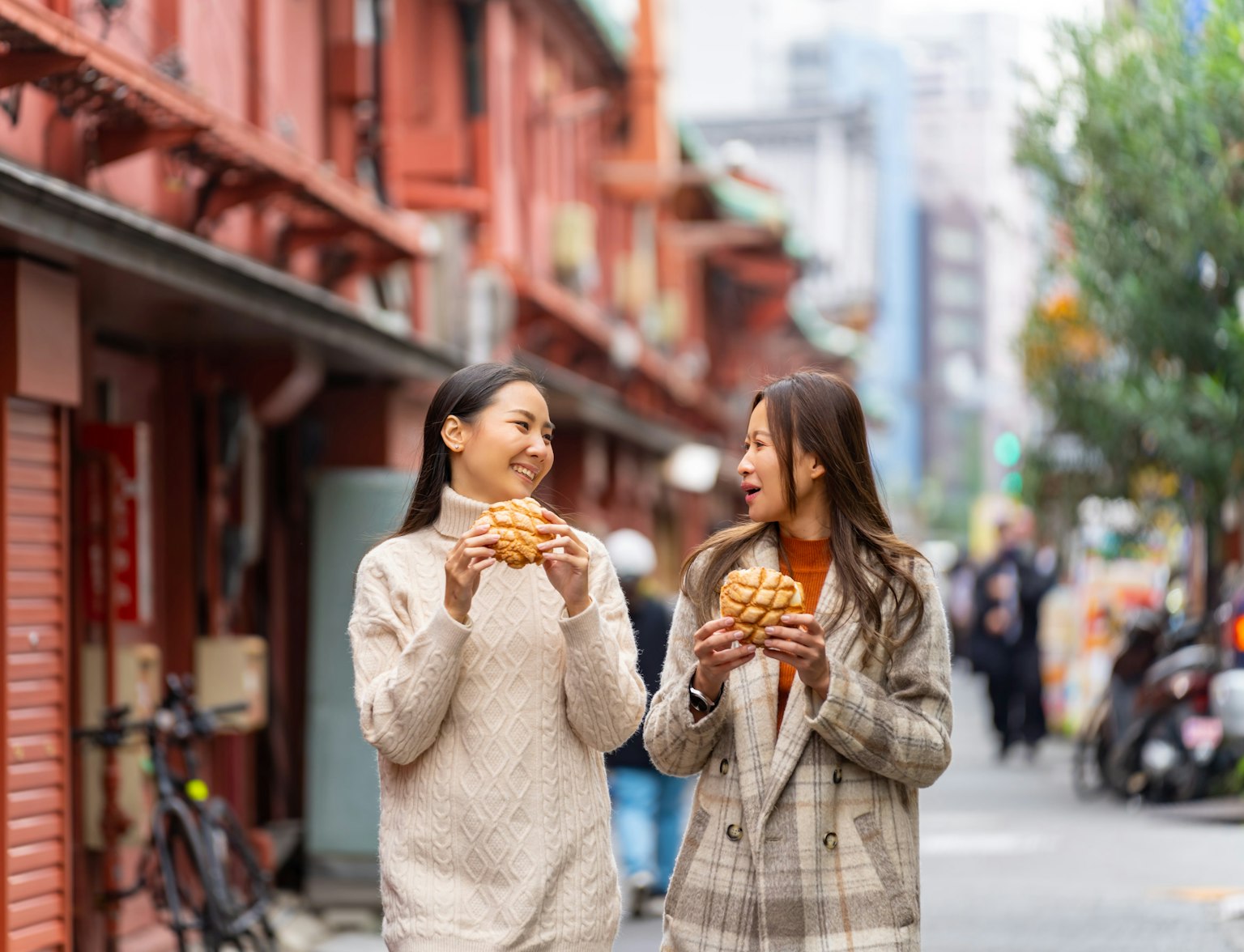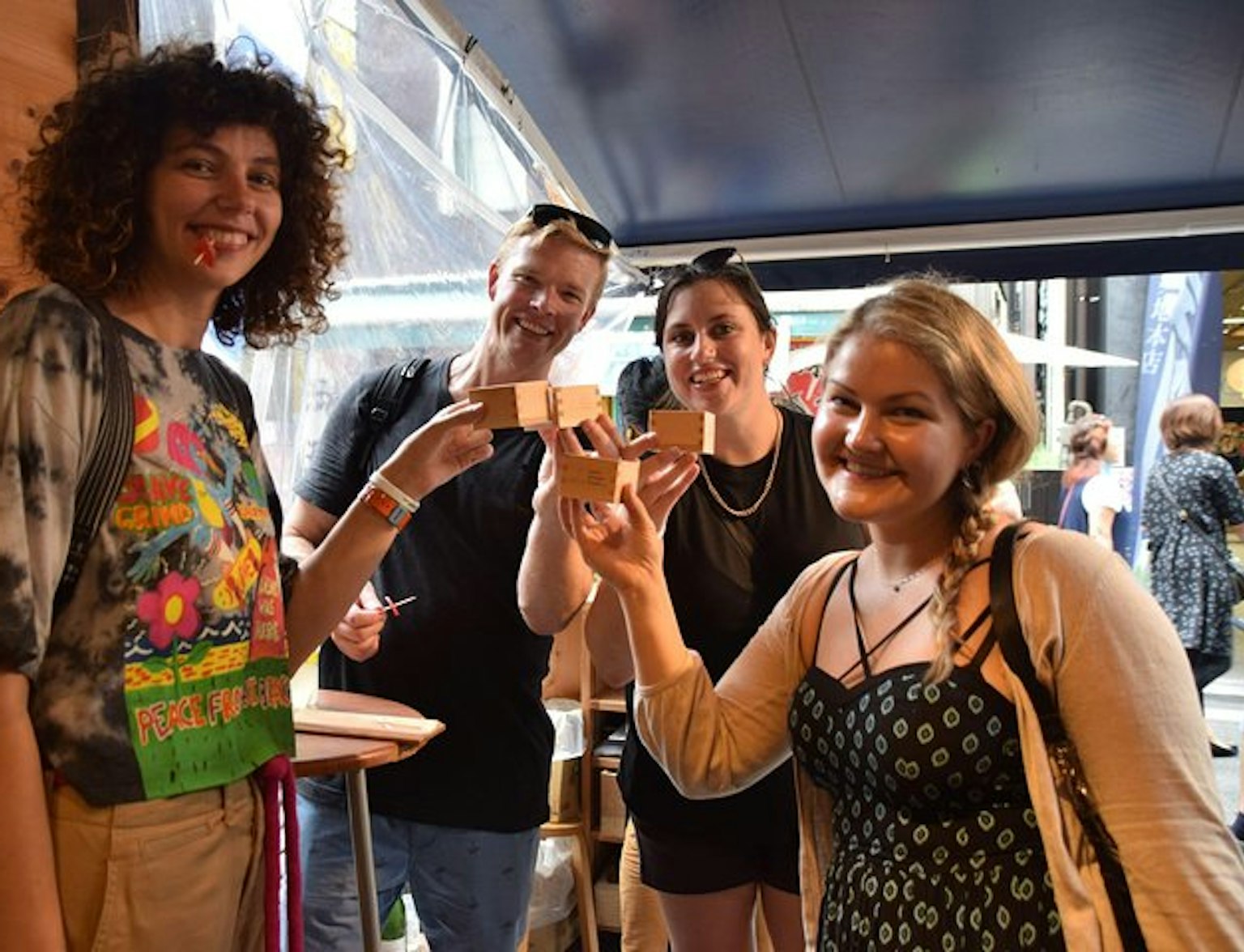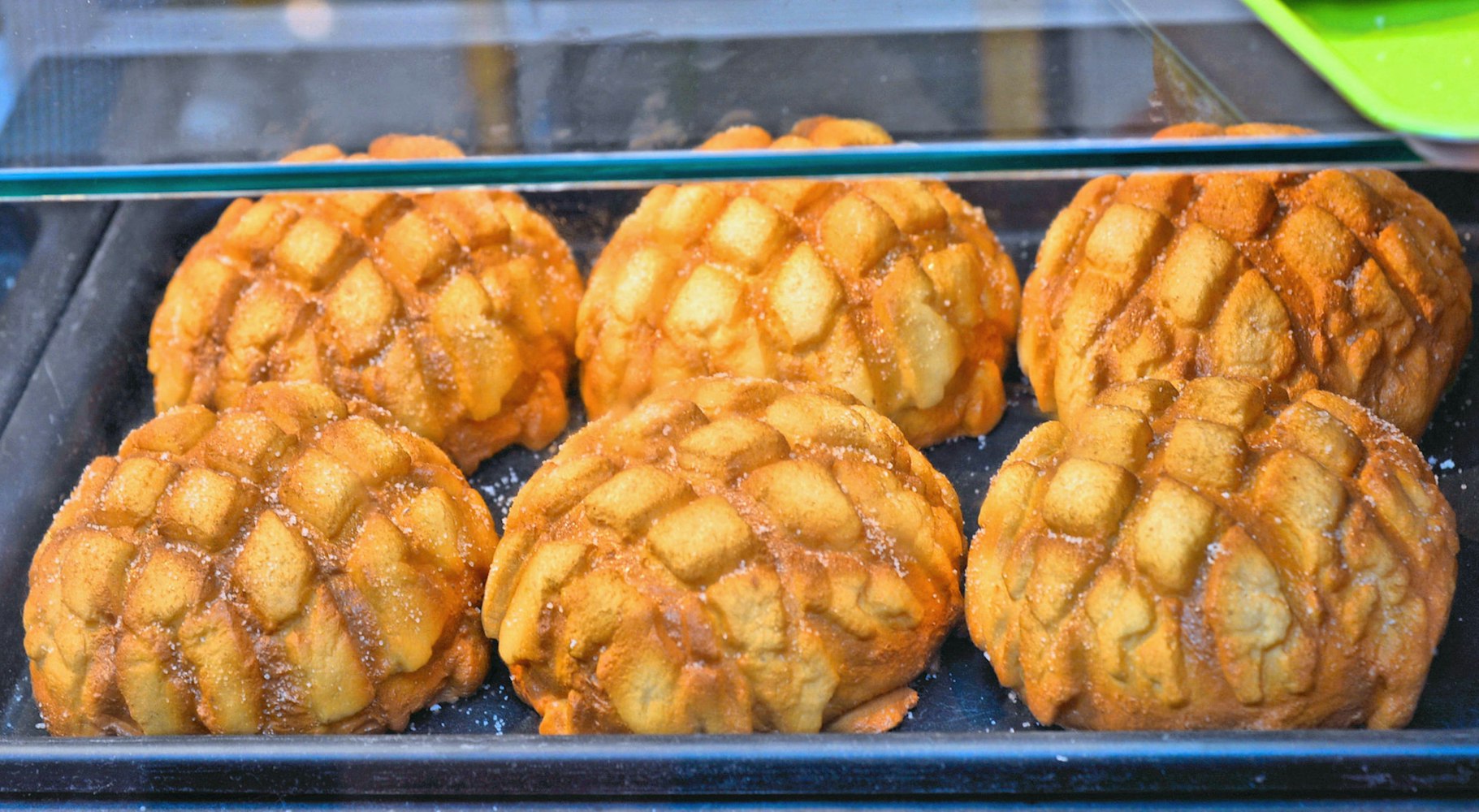

Tokyo is a food lover’s paradise, offering everything from high-end sushi to casual ramen joints. But one of the most exciting ways to explore Tokyo’s culinary scene is by walking through its bustling streets and sampling the array of street food. Each dish tells a story about Japan’s rich culture, history, and love for fresh, simple ingredients.
Here’s a guide to ten must-try Japanese street food dishes that you should taste when you’re in Tokyo.

Takoyaki is a must-try snack often found in street markets, depachika (food basements), and festival stalls. Originating from Osaka, this dish has gained immense popularity across Japan, including Tokyo, where you’ll find it everywhere from Harajuku to Asakusa.
The word "takoyaki" translates to "octopus fry." These bite-sized, golden-brown balls are made from a batter of wheat flour mixed with dashi (Japanese soup stock), green onions, and ginger.
A small piece of tender octopus is placed in the center before being cooked in a special takoyaki pan with circular molds. Watching a vendor skillfully flip the balls using chopsticks is almost as satisfying as eating them.
Takoyaki is typically topped with a rich takoyaki sauce, creamy Japanese mayonnaise, bonito flakes, and seaweed powder. The contrast between the crispy exterior and gooey interior makes every bite a delightful experience. Prices usually range from ¥400 to ¥600 for six to eight pieces, and popular spots include Gindaco, a well-known chain, or the food stalls in Ameya-Yokocho.

Discover the city's hidden culinary gems and the fascinating stories behind the foods we eat.

Yakisoba is a comforting noodle dish often prepared at festivals and street fairs, where its aroma fills the air. This dish is made by stir-frying wheat-based noodles with thinly sliced pork, cabbage, carrots, and onions. The seasoning comes from a tangy and slightly sweet sauce, which ties all the flavors together.
Vendors cook yakisoba on a large iron griddle, which creates a slightly charred flavor and a satisfying texture. It’s usually garnished with pickled ginger, a sprinkle of seaweed powder, and sometimes an optional egg fried right on top of the noodles.
Popular locations for trying yakisoba include the food stalls at the Sanja Matsuri in Asakusa or the shopping streets of Shinjuku. A portion generally costs between ¥500 and ¥700, making it an affordable and filling choice.

Taiyaki is a classic Japanese street food that combines aesthetics and flavor. Shaped like a fish, this pastry is made by pouring batter into a fish-shaped mold, adding a filling, and sealing it with more batter before cooking.
The traditional filling for taiyaki is red bean paste, but many vendors now offer variations like custard, chocolate, matcha, and even savory fillings such as cheese or curry. The texture of taiyaki is a delightful combination of crispy edges and a soft, slightly chewy interior.
Taiyaki is often freshly cooked at street stalls in areas like Akihabara and near Senso-ji Temple in Asakusa. A single taiyaki costs between ¥200 and ¥400. For an authentic experience, visit Naniwaya Sohonten, which has been serving taiyaki for over 100 years.

Experience Asakusa, Tokyo, through a family-friendly culinary tour.

Okonomiyaki is a versatile dish often described as a savory pancake, though it’s much heartier and packed with layers of flavor. The batter is made from flour, eggs, grated yam, and shredded cabbage, and you can choose from toppings like pork, seafood, or cheese.
The name “okonomiyaki” loosely translates to “grilled as you like it,” reflecting its customizable nature. It’s cooked on a griddle until golden brown, then topped with a tangy sauce, mayonnaise, seaweed powder, and bonito flakes.
In Tokyo, you can find okonomiyaki at specialized street food stalls or casual restaurants in areas like Tsukishima Monja Street. A serving typically costs ¥700 to ¥1,000, and watching the cooking process is as enjoyable as eating the final dish.

Karaage is a street food staple that takes fried chicken to another level. This dish starts with bite-sized pieces of chicken marinated in a mixture of soy sauce, ginger, garlic, and sake. The chicken is then coated in potato starch and fried to achieve a crunchy exterior while keeping the meat moist and flavorful.
Karaage is often served in small portions, making it ideal for eating on the go. Some vendors offer different flavor variations, such as spicy or yuzu citrus-infused options. Popular areas to try karaage include Ameya-Yokocho in Ueno and the small alleys of Omoide Yokocho in Shinjuku.
Prices range from ¥300 to ¥600, depending on the portion size, and it’s an excellent snack for pairing with a cold drink.

Embark on a culinary journey through Tokyo's best-kept secret.

Dango is a traditional Japanese dessert made from rice flour. These small, chewy dumplings are skewered on a stick and grilled over charcoal, giving them a smoky flavor. The most popular variety is Mitarashi Dango, coated in a sweet soy-based glaze that perfectly balances savory and sweet.
Other variations include Anko Dango, topped with red bean paste, and Yomogi Dango, which incorporates mugwort for a subtle earthy flavor. Dango is often sold near temples and shrines, with stalls around Senso-ji Temple in Asakusa being particularly popular.
A skewer of dango typically costs between ¥100 and ¥300, making it an affordable and satisfying snack to enjoy alongside a cup of green tea.

Ikayaki is a dish that highlights the simplicity and flavor of fresh seafood. A whole squid is marinated in a soy-based sauce and grilled over an open flame until tender. The grilling process gives the squid a slightly smoky flavor, while the marinade adds a sweet-savory glaze.
The squid is usually served on a skewer, making it easy to eat as you explore Tokyo’s streets. Ikayaki is commonly found at food markets like Tsukiji Outer Market or during seasonal festivals. Prices range from ¥500 to ¥800 per portion, and the rich flavors make it a must-try for seafood enthusiasts.

Explore the vibrant Tsukiji Fish Market in Tokyo on a 3-hour guided tour.

Melon pan is a sweet bread known for its distinctive cookie-like crust that resembles the surface of a melon. The bread itself is soft and fluffy, while the crust adds a crunchy, sugary layer. Though traditional melon pan doesn’t have a melon flavor, some modern versions include melon-infused fillings or toppings.
This treat is widely available in Tokyo, particularly in bakeries and street stalls in areas like Asakusa and Akihabara. A single melon pan costs around ¥200 to ¥300. Some vendors serve it with a scoop of ice cream inside, creating a refreshing twist on this classic snack.

Oden is a comforting dish often enjoyed during colder months. It features a variety of ingredients simmered in a light, soy-based broth, including boiled eggs, daikon radish, fish cakes, tofu, and konjac jelly. Each ingredient absorbs the flavorful broth, creating a warm and satisfying meal.
Oden is sold from street vendors, food carts, and even convenience stores like 7-Eleven during winter. Prices depend on the items you choose, typically ranging from ¥100 to ¥300 per piece. It’s a dish that warms both the body and the soul, perfect for a chilly day in Tokyo.

Discover Tokyo's hidden culinary delights in Shinbashi on a 3-hour evening food tour.

Tokyo has put its own spin on crepes, turning this French treat into a Japanese street food favorite. Harajuku’s Takeshita Street is the go-to destination for crepes, where vendors prepare thin pancakes fresh on a hot griddle before filling them with an endless variety of ingredients.
Sweet crepes often feature whipped cream, strawberries, bananas, and chocolate sauce, while savory options include ham, cheese, and egg. The crepes are rolled into a cone shape, making them easy to eat while strolling.
Popular stalls like Marion Crepes and Angel’s Heart offer creative combinations, with prices ranging from ¥400 to ¥800. These colorful and customizable treats are as photogenic as they are delicious.
Japan is a paradise for street food enthusiasts, with a wide range of delicious options available at every corner. Here are some of the best places to find Japanese street food:
Tsukiji Fish Market: Tsukiji Fish Market is one of the world’s largest fish markets and a must-visit destination for seafood lovers. While it’s famous for its fresh sushi and sashimi, Tsukiji also offers a wide range of street food options, including grilled seafood, seafood skewers, and fresh fruit.
Shinjuku’s Omoide Yokocho: Shinjuku’s Omoide Yokocho is a small alleyway filled with tiny bars and street food stalls serving a variety of Japanese snacks, including yakitori, tonkatsu, and okonomiyaki. This hidden gem is a great place to experience the local food culture and mingle with the locals.
Asakusa’s Nakamise Shopping Street: Asakusa’s Nakamise Shopping Street is one of the oldest shopping streets in Japan, dating back to the 17th century. This historic street is lined with traditional snack shops and street food stalls selling classic Japanese treats, including senbei, ningyo-yaki, and menchi-katsu.

Embark on an immersive Bar Hopping Tour in Shinjuku.
To make the most of Tokyo’s incredible street food offerings, start by exploring neighborhoods known for their vibrant food stalls, such as Asakusa, Harajuku, and Tsukiji. Keep cash handy, as many street vendors don’t accept cards, and try to visit during festivals or seasonal events when food stalls are in full swing.
For a deeper experience, look for local favorites or lines at stalls—these often indicate quality. Pair your snacks with a warm drink in winter or refreshing tea in summer for the perfect balance. With a bit of planning, you can uncover a variety of tastes and textures that showcase Tokyo’s diverse culinary heritage.



